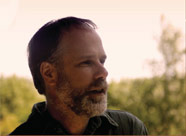My initial sessions acknowledge the difficulty of starting therapy. Most people contact a therapist because they have concern about a part of their life that is interfering with their well being. While they may be able to talk a lot about the problem, often they have questions (and fears) about what the problem actually is and how they should approach it. Typically, while they have a desire to get help, they also have some degree of ambivalence about going to therapy.
Acknowledging these concerns, I spend the first two or three sessions helping clients get clear about what their goals are in seeking therapy. This helps them by deepening their understanding of what their challenge or distress may be while introducing them to how I work. During this time, if we find that we’re a good match, we will make an agreement about the goals that we’ll work towards. If we don’t seem to be a good fit, then I can assist in finding another therapist.
As we continue our process, the foundation of my work consists of creating an atmosphere of focused calm. My office becomes a place of retreat where a client can become grounded, with a reprieve from outside pressures. I help guide my clients in exploring themselves, paying attention to their thoughts, feelings and body experiences as they unfold. Together, we develop a common language for how we perceive these experiences.
I listen in particular to 3 key life areas: quality of relationships, ability to experience good things, and response to stress. This exploration increases my understanding of the client’s strengths and the role that these strengths can play in the healing process. Carefully, gently, I then turn my attention to what feels wounded within the client. I take steps, guided by the client’s feelings of safety and control, to become familiar with the nature and extent of these wounds. I then work with the client on crafting an appropriate response so that they may more fully participate in life.
Often woven into these steps is a process of increasing the client’s body awareness. Sometimes, this is done through simple exercises like gentle breathing. At other times it’s a more complicated process of guiding someone to an awareness of how their emotions are being expressed in their body. With this new awareness, clients’ often feel that they are more grounded, more present in their daily lives, and able and willing to feel more deeply. The work ends when the clients’ defined goals have been met or they feel ready to move on.
“Joel provides a gentle, warm and patient presence, free of his own agenda and willing to join with the client in a non-judgmental exploration of ones self and experience. His clarity, kindness and strength-based approach contribute to the fostering of a safe and collaborative therapeutic relationship where the client feels valued, understood and supported.”
Ashley Nunn, MFTI
Co-therapist in Family Therapy.
